Questions Answered – Cross Cut and Ripcut Saws
For more information on saws, see our beginner site Common Woodworking.
Question:
Hi Paul,
I am trying to understand the difference between ripcut and cross cut saws. It seems confusing to me because there are so many. Do I need one of each or just one. I think from reading your posts and watching the video on saw sharpening you are saying I need only one. Is that the case or am I missing something?
Answer:
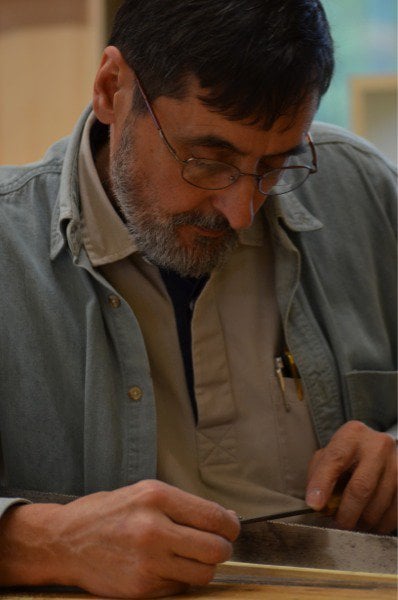
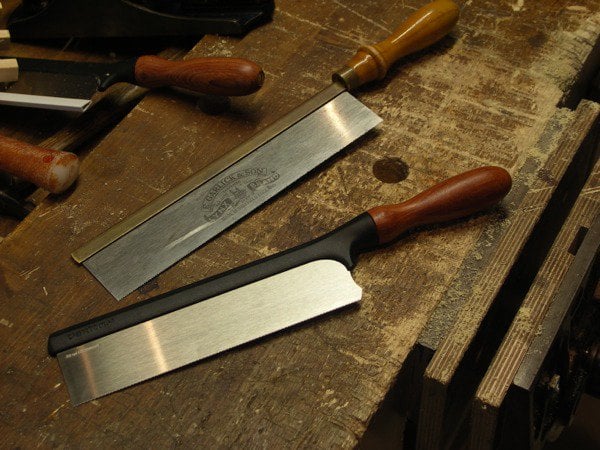
Let’s face it, a tool maker or supplier will always want to sell two or three saws to a buyer and the simplest way to do that is persuade you the buyer that you need both crosscut and ripcut in every size of saw made. They will also give the impression you need every saw length made, which will total a dozen or more. Of course a saw arriving sharp saves you having to know how to sharpen and clean one you might buy on eBay or secondhand and there are good arguments in there too. Which new woodworker wants to or has the fore knowledge to start sharpening their saws? It can indeed be a dilemma.
Pull Stroke Push Stroke is a Push-me-pull-you

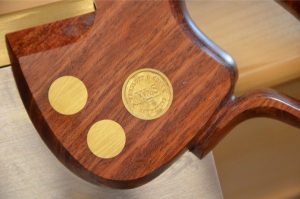
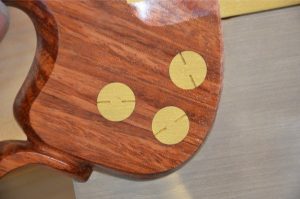
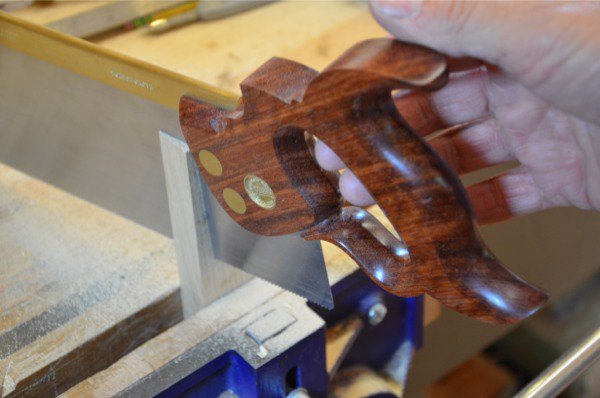
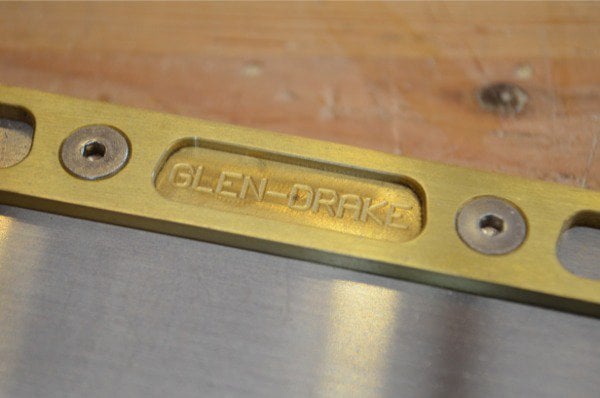
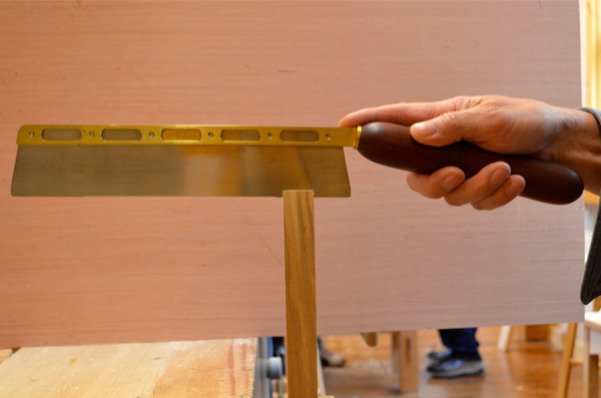
The fact is that neither the Western or the Eastern saw worked better one over the other. many will say I am wrong but some of the very finest work ever accomplished was done so with western push-stroke saws. Japanese saws are just different. The problem arose when saw makers and sellers saw a niche where they could sell the Japanese pull-stroke saws to a western market buyer. Makers as always wanted a disposable consumable and so added impulse-hardened teeth, which yet again put them in control and meant buying into the disposable saw. There were two main reasons for this. Most people, 99% of woodworkers, would not have the developed skill or knowledge to sharpen Japanese saws and people are looking for something simple. Throw away is simple. Wrong, but, in the short term of false economy, simple. Japanese pull stroke saws are different and some are quite complex with additional bevels. Impulse hardened teeth last many times longer in sharpness than regular hardened steel that is resharpenable. This resulted in successfully converting people to a culture resulting in disposable or throwaway saws that lasted a few months instead of decades and even centuries. The reality is that western saws have the same ‘success’ story of supposed ‘progress’. They too make throwaway saws and this is what predominantly sells. Straight off the bat I would advise anyone not to buy or buy into the disposable saw lie. I would also advise that Japanese saws are not necessarily better or worse than western saws. I have used both types extensively. I want a saw I can sharpen over and over a thousand times and more. I want one that takes me only 4 minutes to sharpen and one that cuts to the line every time I pick it up. I think that the majority of pull saws made by mass makers have hard-point teeth. They cannot be resharpened with conventional Japanese saw files. That said, there are reputable suppliers selling resharpenable pull stroke saws. These saws are honestly produced and stand in the face of those produced as counterfeits by other mass makers.
If you prefer a ready-to-go saw consider starting with a Veritas or two new saws
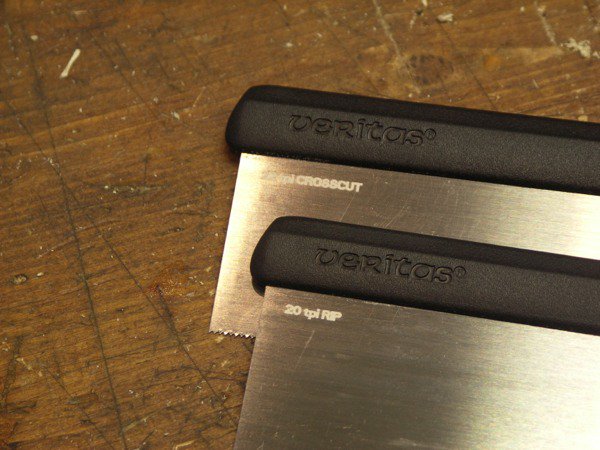
As with most hand tools, you will rarely find that one size fits all. I own dozens of saws of every type, but use only three or four. I buy them cheaply second hand and restore them to former glory. That’s how I became a master saw doctor. That said, you can sharpen any saw to rip and crosscut using the same saw. Eventually you may want to define one saw with more a fleam-bevelled pinnacle cut. Shortly we will be completing the video for this method of sharpening. Follow my progressive rip video to see how best to sharpen a saw that will cut both ripcut and crosscut and give you an easy-start saw.


Paul:
Wow! The statement at the end about our demand for cheapness got me good! I started looking for handsaws when I was building your workbench from the videos. I found some with Lynx I think they were called. Anyhow, I wanted an 11 point for crosscut and 7-8 for rip and I really wanted a tenon saw and a dovetail western saw. My wife told me to look on eBay and find them. I found a cabinet-maker tool guy that had Disstons reworked and sharpened for use. I ended up with two excellent Disstons and two back saws with new walnut handles (sharpened too). Yes, I’m cheap and I agree with your statement but there’s another side to the corporate view, they want more profit, more wages for their employees. And, they are big. I bet Disston got bigger and bigger too and their quality fell off.
For me, I wanted good saws, sharpen-able, and good quality. I found that. I came right home and made a box for my new (old) saws and 2 weeks later I bought 5 Disston’s at an antique store where people buy them to hang on walls. I want them used. I cleaned them up, waxed them with Renaissance wax, sharpened them, and refinished the handles with shellac. Oh, and I buffed the bolts and emblems. I learned how to sharpen from my friend and watching yours and others videos. I feel like you do about the hand tools. It makes me mad because I have a Stanley Shark saw with the hardened teeth and they got broken somehow and it’s ready to throw-away. I still have it because my grandmother gave it to me for a birthday. Keep up your good work. People don’t realize how you can do things with hand tools (that are sharp of course) and get great satisfaction from their work. And, everyone doing woodworking needs the sharpening tools and knowledge. I think that’s imperative.
Thanks !
I emailed with a similar question awhile back. It is hard to muddle through all the saws and decide what is needed or will be the best one for a job. I ended up with 3 usable old Diston saws. One for tenons and two back saws. I also bought a Cosman dovetail saw. While some will say it is over priced you never regret money spent on quality. Without your video on saw sharpening the Diston’s would have been impossible to use. Now they have a new life..
I am till curious what to use to get years of tarnish of the steel.
Renaissance wax
Hi Paul now that I am able to rework and sharpen saws. I cant seem to pass up a good deal on used saws when I find them. Only problem is there are so many so I have started collecting saws. But I just love fixing and sharpening them. Thank You for sharing with me what has turned into a new hobby.
The bottom-line is that in purchasing saws, or any hand tool, depends on the user and his needs. The vast majority will only need the cheap mass produced products for their infrequent casual use. I couldn’t be presumptuous enough to judge any individual or corporation, for that matter, for using or offering a product that fits that need. I wouldn’t expect everyone to go out and buy a new Bad Axe backsaw ($250) or a 100 year old Disston for there clean-up work after using some power equipment.
Your thoughts on the Japanese-Western debate was right-on. Push or pull only depends on what side your showface is on and if the fibers are supported.
I have another question: in a hardpoint saw, is it possible to remove completely the hardpoint teeth and form new teeth? Or the steel is too weak for that?
I have in the past tried to cut these saws with a hacksaw and found the plate way too hard so I assumed too hard for a file too. The steel they use is far from weak so that’s not the issue. I have wondered about putting a plate in the oven at 325F to see if the teeth can be annealed but never done it yet.
I’ve been wondering about this too.
I’ve also been told they make great card scrapers when cut up, though I’ve yet to try it! There must be some use for old hard point saws!
Old saw blades can be cut up to make scratch stock; it works great, but they are hard to cut up with a hacksaw.
I’ve had good luck using a thin diamond plate like the EZE lap diamond hones to sharpen the teeth on an induction hardened hard point saw. Same principal as regular saw sharpening, but the teeth were a bit oddly shaped so just followed the bevel angle on each tooth. Worked great and the saw is much sharper. Once the discolored induction hardened teeth are worn too much I suppose a diamond needle file set could deepen the gullets and form new teeth. It would be better to have a triangular shaped diamond file larger than a needle file, but I haven’t found one to try out. And really it would need the proper 6 edges of a saw file so that the gullets didn’t get too sharp. One could use a different shaped needle file to reshape the gullets without that, but it’s an extra step.
I am glad this has worked for you so far but long term, diamond files would be an expensive alternative for sharpening because the hard points would win. The plate holding the diamonds on would be the weak point in the objective not the diamonds. In narrow surfaces and angled corners, the diamonds are dragged off with the plating that holds them in place in a very short time.
Hmm that makes sense. It seemed the cost of the diamond stone was about the price of a saw file and I definitely didn’t want to throw away the saw just because I didn’t know what I was doing back when I bought it.
Tim,
There is a German company called Westfalia who sell diamond coated triangular files. Try westfalia.co.uk and see what they have. I purchased one some time ago but it seems to be less refined than using a normal steel file. However it is good for hogging off metal.
Regards,
Keith
That link should be http://www.westfalia.net
Alan,
You are correct. its Westfalia.net and its item. 836588 in stock for £14.99.
Dear Nicolae,
last year I bought a Sandvik 2000 hardpoint just because I liked the form of the blade and the taper that was ground in it. It was nice and blunt probably 30 years old and only availeble to craftsman years back because it was the most expencive saw in the shop. I wondered if I could file the teeth.. Took out an old Nicholson saw file ,yes from Mexico, half worn and used a lot of force so it would not scream to me in agony… It worked…I often resharpen Silky (Japanese) tree saws with hardened teeth. There are diamond files for them and the trick is not to use any force what so ever…Because as Paul set out you only loos your diamonds…If you want to know if you can file new teeth on a hardened saw, try If you can file a little on the back of the saw. In the comming months I will be anealing ten sandvic hard point garden saws, or bacos I am not sure, in my oven and will post the results..
Hi there, I think both of you that have mentioned “annealing” in a home / non-industrial oven have the term (and the corresponding temperature ranges) transposed with “tempering”. The exact temperature range of the spring steel (what good saws are made) varies with the exact alloy but annealing (or “normalizing”) would, in all cases, involve temperatures in execc of 1000 degrees ferinheight. Tempering high carbon steel is fussier than annealing as if you get it too hot you’ve softened the steel too much and need to redo the entire heat treatment process. With something as thin as a saw blade, this would be extremely difficult without a special purpose tempering oven/forge.
It’s a romantic notion, but I wonder whether with today’s interest in quality hand tools, whether a good Sheffield maker could once again survive making quality hand saws?
I would certainly be very proud to support a quality English saw company. In the US, tLie Nielsen have done very well copying Stanley tools and making improvements where they see fit. We had a reputation for producing the very best steel once, what are the implications in trying to do that again?
People will pay a premium for quality tools and I’m sure the prestige of a reborn English maker would even translate to sales across the pond. I see a lot of innovation in the US, but sadly not so much here.
I talked with the lead director at Thomas Flynn Saws recently and they are actively pursuing British tool makers to revitalize this area of Sheffield’s economy. They already make the widest range of saws of any maker of saws for almost all levels of the market and offer a tool site to buy other tools from too. I will be testing their tools out as soon as we place an order and will give the results out on my blog. I use their saws in the every day of life too and have used their gents saws for about 25 years. I am still using the one I bought in 1988 and it has about another 150 years of life in it.
I’ve contacted Disston Tools and LN Tools- which still does exist in the very same Philidelphia sight – about a tie up. As last known they were in a possible discussion about reviving that aspect of the Disston business long gone.
They would have to go a long way back since the sold to Canada Disston. Since the 60′, Disston has not produced a quality saw. And, actually, I have yet to find a true quality US made hand saw. I have tried high-end ones made there in recent years and found them sadly lacking compared to the former glory of US handsaws. It’s very sad but the US and the UK companies did sell out.
I have came across three wooden wedged planes. A smoother , jack and cothin. I would just like to under stand how they work..tell me if I’m being stupid.
Hello Paul,
I am just about finished the workbench from your videos and am slowly outfitting my shop with your recommendations for quality tools. I have used a Stanely saw that I picked up from Home Depot and its worked well so far. I assume this one is not sharpenable and am going to look for a second hand one to sharpen up. What are some key things to look for in a saw and what are the BEST brands to look for?
(I know you have mentioned certain brands but which ones are the best to pickup?)
My answer would depend on whether you want to go the new or secondhand route. There are new handsaws available that do not have hard point teeth but of course today there are much fewer choices than say 75 years ago when makers of the last century started to decline because of the demise hand tool woodworking was in. In the US there were several premium saw makers but in my opinion few ever surpassed what Henry Disston saws brought to the table. I use a Henry Disston panel saw every day made in 1846 with a 16″ plate. I also use several other saws from a similar period made by Spear & Jackson. Atkins and Atkinson are two other makers I like and then there are Lynx, Garlick, Flynn,Roberts and Lee to name a few from her in England. You know, I don’t have an issue with hard point saws save to say that in general they are throwaway saws with plastic handles the feel of which never changes like the fruitwood handles of the early makers does and did. For cross grain cutting and cutting sheet goods they really work very well and I buy them for this type of work if I don’t want my finer saws outdoors in my shed building and such. For limbing trees they work well too. But, there is no doubt that most of the modern makers who employ this method of making you return for a new one every few months or even years has an agenda hidden behind their strategy of wanting to ‘help‘ you. If, like with food suppliers and disposable knife blade makers, selling products you grow to depend on, you keep returning to them long enough you will forget how to grow or sharpen or it will become too bothersome because they are so inexpensive to buy and throw away when dulled. Most “professional” woodworkers here in the UK at least are very proud of buying throwaway saws in packs of ten and, in fairness, when said and done, they live in a highly competitive world where time is money. For me it’s more the loss of skill that concerns me than almost anything. I’ve been mocked on and off by people on both US and European continents for sharpening my saws on the job and for even using a hand saw on the job, but there were times when I felt very contented up on the roof cutting the joists and hips for a new home or repairing an old one.
Not knowing or even being bothered to be able to sharpen your own saw when the task is so simple is a sadness I try to counter. It was never really progress to make throwaway saws or pressed fibre boards they were designed to cut through. Mass-making products are costing the planet and it’s those yet to be born that will pick up the tab. It’s the mockers and the scoffers in this present age that thoughtlessly counter what we once had in a saw made to last 100 years and who denigrate something of worth that sadly seem to succeed.
So, which saw? Those above are your best bet when it comes to cost. You can buy the best in a Disston with a well-worn plate and handle for under $50 or £50 and in today’s money that’s cheap. Here in the UK you look for a pre 60’s Spear and Jackson and you won’t go far wrong.
Hello Paul,
I am just about finished the workbench from your videos and am slowly outfitting my shop with your recommendations for quality tools. I have used a Stanely saw that I picked up from Home Depot and its worked well so far. I assume this one is not sharpenable and am going to look for a second hand one to sharpen up. What are some key things to look for in a saw and what are the BEST brands to look for?
(I know you have mentioned certain brands but which ones are the best to pickup?)
I resently purchased a hand saw at a yard sale. It had a Bishop&sons logo. I had never heard of the brand but the handle was beautifully made and fit my hand like a glove. I figured anybody who put that much work into the handle had to make a good saw. The only thing I didn’t do was sight down the blade. It has a crook in it. I really like this saw, is there any way to remove the crook?
Yes, you can take it out usually. One requires a hard steel plate or better still an anvil. That’s if the kink is in the middle of the plate but can be used anywhere. If the kink is near or along the edge it can usually be bent the opposite way. If the kink is sharp, you will need to constrain the plate and bend right tight to the kink, if it’s a bend then just bend the whole plate opposite in a big bend. Most often these methods will fix the problem and you have little to lose.
Great post Paul. I just had a couple of comments. Firstly it is fantastic that we can have this discussion. When I started really getting back into woodworking in the early 90s, there was nothing unless you tramped around antique dealers. Finding a really good saw involved searching then wandering up to a counter and trying to convince a beady eyed dealer that this thing was a piece of junk (which only worked some of the time), because there was no Ebay! I for one had no idea what I was doing and bought all kinds of rubbish as well as a couple of killer saws that will be on my funeral pyre with me when I go. Now I am lucky enough to have a range of Disston, Atkins and a couple of Sheffield maker saws that are excellent.
The second point is that there are a huge number of people following your blog (and others), sharpening and restoring tools and building huge collection of saws, planes, drills, etc that (if we are all honest) will probably get used 2-3 times a year if not a decade. I recently bought an estate lot of 20 handsaws of which 7 are good quality, highly recoverable etc. I didnt buy them because I want more saws. I bought them to restore and donate to one of the many organizations that are putting together vocational training and comprehensive kits for underprivileged communities that don’t have access to ebay, a good quality saw maker, plenty of disposable income etc etc. There are a few in the UK and Canada that seem to be doing great work (Tools for Self Reliance, workaid, Tools with a Mission etc (Note: this is NOT an endorsement). I have a friend just returned from Cameroon and started telling me about the experience of the people there buying very cheap goods from China – non stick pans that fall apart after one heating, tools that bend or break on first use – WAY worse than anything we get (hard to believe but true). They don’t need cheap rubbish tools. They need good quality, “previously loved”, reliable tools that can help them build a living in the same way you and others have. Wouldn’t it be great to get everyone that reads your blog to restore, sharpen and donate one good quality tool that they don’t need to someone that really does. I am sure you have covered this topic before – apologies if I missed it – I was too busy angsting over every cut, navel gazing contemplating my next plane purchase and wondering whether I should “invest” in yet another esoteric tool that will sit in my basement! 🙂
Duncan you a spot on. My mom used to say the poor can’t afford to buy cheap. She started married life in the 1960’s using an orange crate as a table. My parents solid maple bedroom suite looks the same as when it was bought 70 years ago. I hope it will go to grandchildren. So much money is wasted on buying the same thing over and over. It is false economy. You have a great idea. I hope it catches on. With Paul’s help, I plan to fill my home with generational furniture, using generational tools.
Paul,
I purchased an 8 inch dovetail saw and like it. After re-toothing and sharpening and resetting, I am experiencing a binding when cutting. I am supposing that my reset was too extensive since the binding appears to be on the sides. Do you have a guess on the likely cause of the binding? I oil the saw, which helps. The cutting action is great, it is just the binding.
Providing the saw is sharpened correctly any and all binding in a saw is the result of set. Either there is not not sufficient set or, in setting the teeth, you slipped and skipped a tooth and ended up resetting the wrong teeth; the ones in between the ones already set. That is, you set the teeth in the same direction as the previous ones. If that’s the case, you can feel that you set the teeth correctly but actually and inadvertently set them all in the same (wrong) direction.. Touching the teeth that can feel ‘set’.When you then use the saw, the teeth being now totally biased, the saw quickly develops a slight curved entry into the cut and binds. This can also happen with unequal set to both sides.
Great Question!
Paul,
I’ve picked up some old tools from my late father-in-law’s collection and I’m trying to renovate them as best I can.
One is an old Spear & Jackson tenon saw which has been badly resharpened – it appears to be about 14 tpi but the teeth are all shapes ans sizes and it looks like the only option is to file out the current teeth and start from scratch. Do you have any tips on re-cutting teeth in a saw? I’ve no idea of how to accurately get 14 tpi by hand.
If you go to the search button on the blog you can find a dozen articles on saws. That’s all I would do and it really works. Easy!
Hi Paul,
Just finished your wonderful sharpening video. I understood that you recommend a rip cut for just about every saw if more than 9 PPI? In other words buy a rip 1/2 tenon/carcass saw (perhaps 12″) which can be used for cross cutting as well?I already have a LN rip 10″ dovetail saw.
Makes life simple. It’s only the maker’s of saws that tell you you need one rip and one crosscut in every size they make. Makes me mad.
Thank you, Paul for the detailed information based on your considerable experience. Have you posted a video on sharpening a crosscut saw with a fleam cut? I see from your above responses that one would be coming out “soon” many months ago.
I came to this page because I was looking information on softening a hardpoint saw blade.
I have a mitre saw blade, 600mm long 14tpi, with hardpoint teeth which I want to use to make a frame saw.
Comments here suggest that softening the existing points would be difficult but that the steel beyond the hardpoints is still good quality.
My question is:
Rather than grind off the hardpoints and re-cut the teeth on that side – has anybody tried just flipping over a mitre saw blade and cutting teeth on the opposite side?
In theory this sounds like it should give a two sided blade much like the Japanese saws. I have saw files and a setting tool so I should be able to cut fairly coarse rip teeth (5-6 tpi) on the back of the blade and use this for ripping and resaw. Flip the blade and the original hardpoint edge is available.